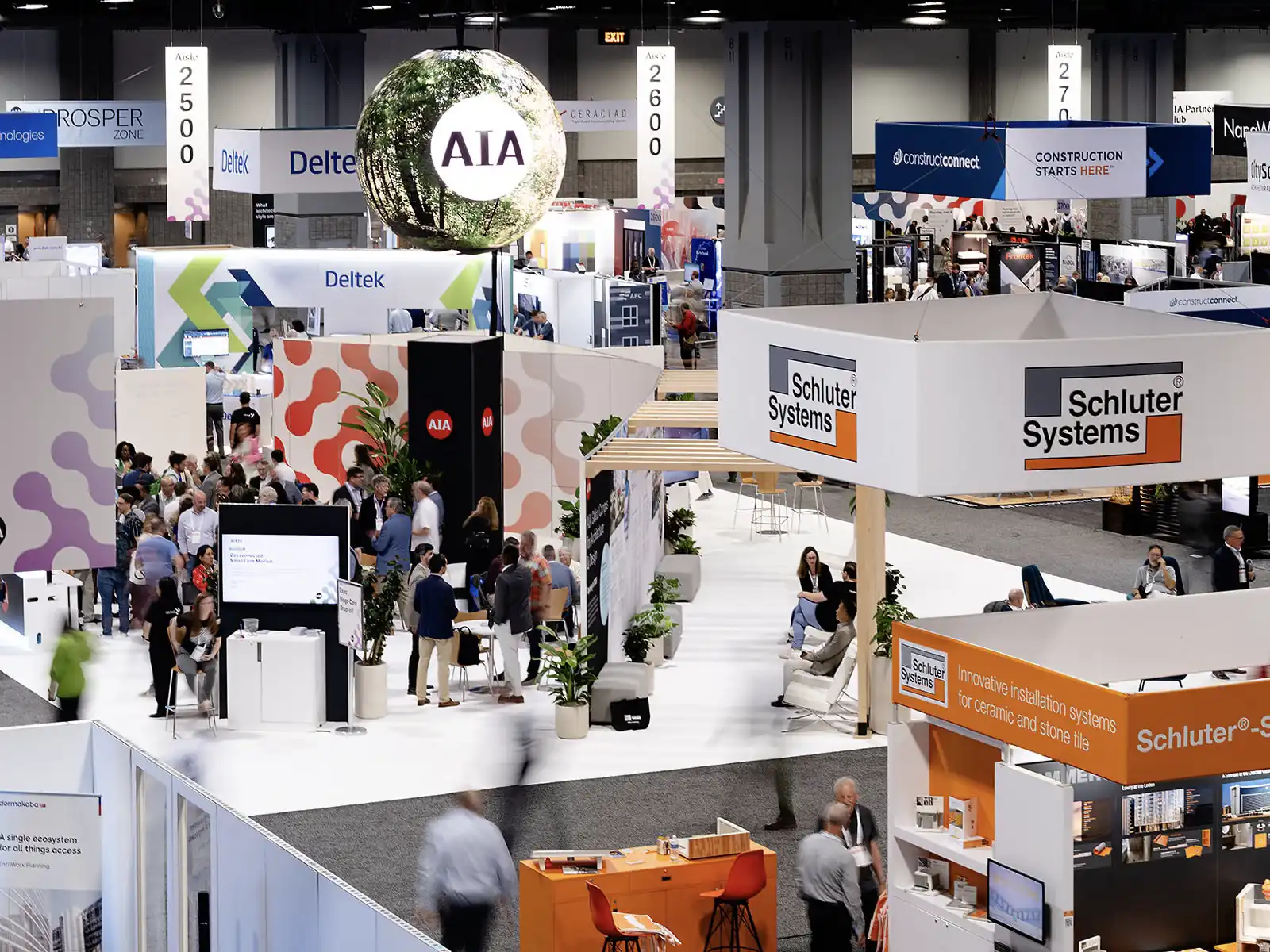For the first time since 2012, the American Institute of Architects is hosting its annual national convention, the AIA Conference on Architecture and Design, in its own backyard of Washington, D.C. As the four-day conference enters its penultimate day, the homecoming has been a largely jovial affair beginning each morning with impassioned award speeches (including from Alyson Steele, president and CEO of Firm of the Year winner Quinn Evans, and Doug Ito, managing principal of Seattle-based SMR Architects and recipient of the 2024 Whitney M. Young Jr. Award) and winding down at night with the usual boozy mixers and celebratory shindigs. (RECORD was on the scene at a party celebrating 2024 Gold Medalists David Lake and Ted Flato.) The hometown locale has also afforded the AIA the opportunity to showcase a special project nearing the finish line: the top-to-bottom renovation of the organization’s longtime 1973 headquarters, which will emerge next year as the zero-carbon AIA Global Campus for Architecture & Design.
Yet as day three kicks off, AIA24 has also felt off-kilter.
The expo floor has seemed a bit sleepier, the overall energy a bit deflated (perhaps D.C.’s oppressive humidity is to blame), and the keynote speakers tapped by the AIA a bit curious for a gathering of the AEC industry with a projected 10,000 attendees in the nation’s capital. The keynoters in question are best-selling author and “happiness expert” Arthur Brooks, CNN chief medical correspondent Sanjay Gupta, and Academy Award–winning Black Panther costume designer Ruth Carter. The absence of a keynoter in the governmental sphere is a missed opportunity considering the time and place: a profoundly consequential election year in Washington, D.C. While the AIA assumes a staunchly bipartisan political stance, its decision to wholly circumvent a D.C. player in its 2024 keynote lineup selection is curious when former presidents, first ladies, prime ministers, and governmental officials have all graced the conference mainstage in recent years. Considering that one of the AIA’s top advocacy priorities is infrastructure, Transportation Secretary Pete Buttigeig would have made for a compelling local choice. (In 2012 in D.C., the keynoters included then-HUD Secretary Shaun Donovan and Pulitzer Prize–winning historian David McCullough—both apropos for the setting.)

The expo floor at AIA24.
Although not a keynote speech, a day two highlight was a sobering but ultimately optimistic speech by White House’s National Climate Advisor Ali Zaidi, who took the stage to announce the Department of Energy’s formalized national definition of a zero emissions building. “This isn't a setback to your creativity,” said Zaidi of the climate crisis. “This is a spur for us to be bigger and bolder … It’s a way to accelerate innovation and position the United States to be the leader in delivering the solutions the world so desperately needs.”
And then, throughout the first two days of the conference, there’s been hushed chatter of that article: a revealing report published by The Architects’ Newspaper on the eve of the conference detailing internal turmoil at the AIA including declining staff morale, surprise terminations, ongoing legal skirmishes, nepotism, and alleged financial mismanagement at the top of the leadership chain beginning with EVP/CEO Lakisha Ann Woods, who succeeded former RECORD editor in chief Robert Ivy on January 31, 2022.
On the ground, RECORD spoke with numerous conference attendees about the report: some were incensed by what they had read and learned; others were already aware of some of the issues outlined in the April 4 letter (talk of dysfunction has been swirling on online message boards for months); and still others had the attitude that goings-on at the AIA don’t ultimately affect their practice.
Amid that backdrop, the AIA held its annual meeting Wednesday afternoon. Amendments to AIA Bylaws and resolutions were put forth to delegates, who rejected most, quite emphatically, in what essentially amounted to a vote of no confidence in the organization—one in which the top five employees in leadership roles earn $1.9 million in annual salary, according to publicly available tax documents from 2022. Those same documents reveal that despite a significant drop in earnings from 2021 to 2022, the nonprofit increased spending by $10 million in that same period.
The 2024 AIA Conference comes to a close on Saturday, but these ongoing matters casting a cloud of concern on the future of the organization’s operation and leadership will likely not dissipate soon.
.jpg?1717785935)



